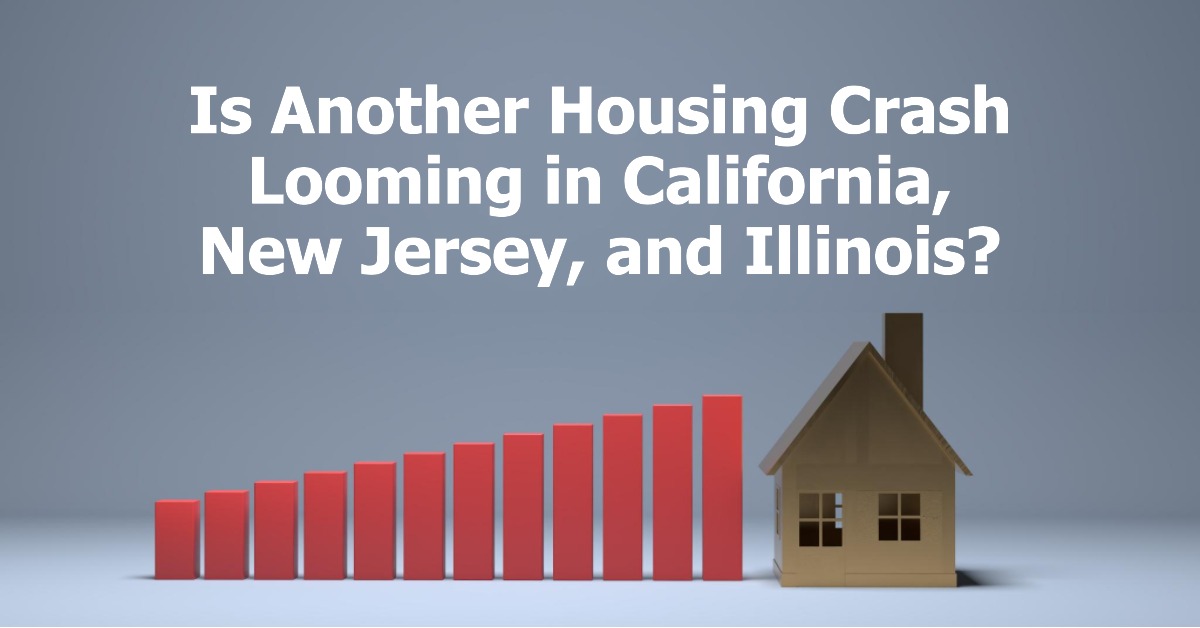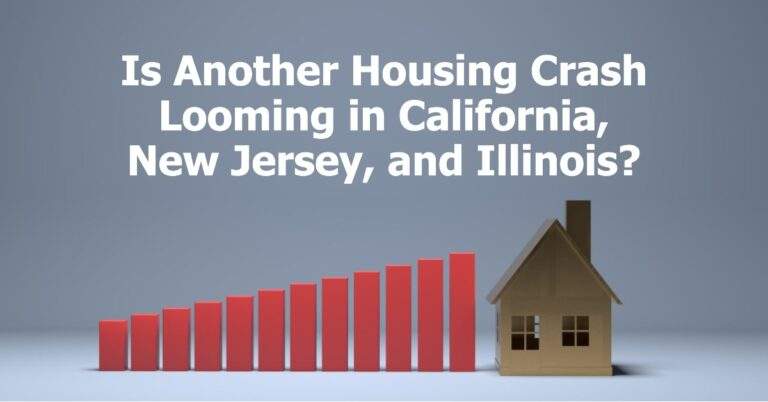
In a recent report, ATTOM, a prominent curator of land, property, and real estate data, has shed light on the current state of county-level housing markets in the United States. The Special Housing Risk Report for the third quarter of 2023 delves into various factors, such as home affordability, foreclosures, underwater mortgages, and more, to identify regions more or less vulnerable to declines.
Housing Markets Most Vulnerable to a Crash
California, New Jersey, and Illinois emerge as the states with the highest concentrations of the most at-risk markets in the country. Notably, the epicenters of vulnerability are in the New York City and Chicago areas, along with central California. These areas show significant susceptibility based on home affordability, foreclosures, and underwater mortgages.
The report unveils a concerning trend, with California, New Jersey, and Illinois accounting for 33 out of the 50 counties deemed most vulnerable to potential drop-offs. The concentration in these states raises questions about the stability of their housing markets. The New York City and Chicago areas, along with central California, are particularly noteworthy for their heightened vulnerability.
The findings from the third quarter paint a nuanced picture of the housing market. Despite improvements in home prices and homeowner equity, concerns arise due to worsening home affordability and increased foreclosure activity. The intricate patterns, derived from gaps in home affordability, underwater mortgages, foreclosures, and unemployment, underscore the complexity of the current real estate landscape.
The report highlights regional disparities, with the South, Midwest, and Northeast hosting less-vulnerable markets. The South, in particular, stands out as having the most markets considered least likely to decline. The Midwest closely follows, along with a group of states in New England.
Rob Barber, CEO at ATTOM, emphasizes the need for caution when interpreting the data. Being on the most-vulnerable list doesn’t necessarily signal an imminent crash for any local market. Instead, it indicates greater potential tripwires that could lead to a decline. These areas warrant continued observation, especially given the overall mixed trends in the market.
Regional Vulnerability: Concentrated Risks in Key Metropolitan Areas
The pulse of housing market troubles is notably strong in specific metropolitan areas, with Chicago, IL, New York, NY, and central California emerging as epicenters of concern. Among the 578 counties with sufficient data for analysis, 21 of the 50 most vulnerable U.S. counties in the third quarter of 2023 are clustered in these regions.
New York City’s Vulnerable Counties
New York City faces vulnerability with three of its counties featured on the list: Kings and Richmond counties, encompassing Brooklyn and Staten Island, and Bronx County. Additionally, the suburbs of New York City, including Bergen, Essex, Ocean, Passaic, Sussex, and Union counties in New Jersey, collectively contribute to the area’s heightened risk.
Chicago Metropolitan Area Concerns
The Chicago metropolitan area is also a focal point of concern, with seven counties on the list: Cook, De Kalb, Kane, Lake, McHenry, and Will counties in Illinois, along with Lake County in Indiana. This concentration highlights potential challenges in the housing markets of these areas.
Central California Vulnerability
Central California, encompassing Fresno, Madera, Merced, San Joaquin, and Stanislas counties, faces notable vulnerability. These counties, including cities like Stockton and Modesto, contribute to the overall risk in the region.
Other Inclusions in the Top-50 List
Beyond the key metropolitan areas, the top-50 list extends its reach to various other regions, including northern and southern California, as well as the Philadelphia, PA, metro area.
Notable inclusions from northern California are Butte County (outside Sacramento), El Dorado County (outside Sacramento), and Humboldt County (Eureka). Meanwhile, southern California contributes to the list with Kern County (Bakersfield), Riverside County, and San Bernardino County.
The Philadelphia, PA, metro area is represented by three counties on the list: Philadelphia County, Gloucester County, NJ, and Camden County, NJ. These inclusions underline the widespread nature of potential housing market challenges across diverse regions.
Housing Markets Least Vulnerable to a Crash
While concerns loom over certain housing markets, there are regions that exhibit resilience, with a lower risk of experiencing another housing crash. The least vulnerable housing markets are predominantly situated in the South, followed by the Midwest, and then New England. These areas showcase attributes such as robust employment and a lower incidence of homeowners facing the threat of foreclosure.
Tennessee’s Strong Standing
Tennessee emerges as a stronghold of stability, with seven of the 50 least vulnerable counties. The Nashville area, in particular, stands out with three counties – Davidson, Rutherford, and Williamson. Meanwhile, the Knoxville area contributes two counties to the list – Blount and Knox. The resilience of these counties points to favorable conditions supporting their housing markets.
Wisconsin’s and Virginia’s Steady Markets
Wisconsin and Virginia also boast resilient housing markets, each with four counties on the least vulnerable list. In Wisconsin, these counties contribute to the overall stability of the state. In Virginia, notable areas include Alexandria and Fairfax in the Washington, DC, vicinity. The presence of multiple stable counties suggests a robust housing environment in these regions.
Stability in the Boston Metropolitan Area
The Boston metropolitan area stands as another bastion of stability, with four counties classified as least vulnerable. Middlesex and Sussex in Massachusetts, along with Rockingham and Strafford in New Hampshire, showcase the robustness of the housing markets in this region. The employment landscape and homeowner security contribute to the overall stability of these counties.





